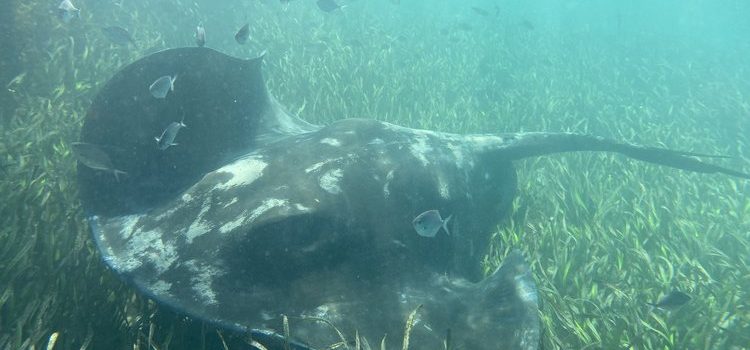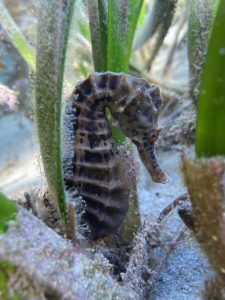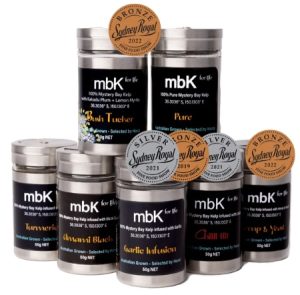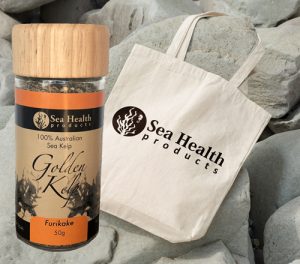
Recently I started volunteering with the Nature Coast Marine Group’s ‘What’s under the Wharf’ program. These events take place at Narooma’s Wharf which is just a 20-minute drive north of Twin Peak Tiny. My job was to scuba dive around the wharf and responsibly bring up items to alert the public to the vast biodiversity that exists just a few meters underwater from where they normally walk.
To those on land, the wharf is often seen as a sparkling blue oasis accompanied by fast-moving currents which local fishermen enjoy taking advantage of. However, to the underwater explorer this short stretch of coastline only accessible one hour after high tide and only for a 60–90-minute window, offers a kaleidoscope of marine biodiversity. Among the many delights, divers can enjoy Seahorses dancing in soft coral, Moray Eels protruding from their enclaves to view the unsuspecting visitors and of course the opportunity to be up close and personnel with the Giant Rays that call the wharf home (these Rays can also be viewed from above water). However, among these many creatures, both great and small, are swathes of Kelp tossing from side to side in the currents. Among the excitement of the many underwater spectacles, it is easy to dismiss the Kelp as nothing more than habitat and safe havens for fish and marine invertebrates. However, Kelp and most other Seaweeds play a key role in enabling both life under and above the ocean.
Seaweed is probably best known for its ability to reduce methane emissions when fed to cattle. It is also a great friend to many gardeners with its soil health, boosting qualities that can consequently reduce the need for chemical fertilizers. However, this only scrapes the surface of how Kelp can help us conquer climate change. Among the most productive and ecologically important ecosystems in the world, Kelp Forests play a critical role in supporting marine biodiversity. Still, perhaps more importantly as with, Fungi mentioned in our last blog, these forests act as a carbon sink. Kelp absorbs Carbon Dioxide via photosynthesis from the atmosphere. Of course, this is how most plants work but, Seaweed and especially Kelp, has the advantage of extreme growth rates, some can manage up to 30 cm a day. As the world’s CO2 continues to rise, the benefits of such plant life acceleration cannot be underestimated. Additionally, Kelp Forests help solve another looming problem i.e. reducing ocean acidification. Kelp helps regulate the sea’s PH levels, providing a more stable environment for marine life. Ironically, ocean acidification is also caused by our excessively rising levels of CO2 which are consequently absorbed into the water, where albeit often unnoticed, is wreaking havoc with marine life. Often the first to suffer are Shellfish and Crustations where increased acidification means they struggle to create their much-needed shells.

Furthermore, Kelp is rich in the essential mineral Iodine, which is vital for human brain function. However, this mineral can often be absent in peoples’ diets. A 2022 paper states that potentially 30% of the world’s population is at risk of insufficient Iodine levels. Additionally, Seaweed contains antioxidants and has the potential to boost the immune system and reduce the increasing modern-day culprit of inflammation.
Unfortunately, as with many species across the world, Kelp faces its challenges. Whereas Kelp can be a major tool in helping overcome climate change it is also a victim of rising temperatures. As seen in Tasmania, marine heatwaves can cause mass die-offs of Kelp Forests. This is due to the waters becoming too warm and the once-supercharged Kelp struggles to grow. Increasing storm intensity also physically tears Kelp from its attachment points hindering its ability to recover.
Other challenges arise for Kelp when their habitat becomes unbalanced. A key concern is the increased number of Urchins that now dominate the seabed due to the lack of predators from overfishing. Without these predators, Urchins can devour entire Kelp Forests, leaving behind “Urchin barrens” where Kelp cannot regrow.
Kelp is also a victim of agriculture and urban runoff which introduce excessive nutrients into the water, leading to algal blooms that block sunlight from reaching the Kelp. Sediment from coastal construction can also smother young Kelp plants, preventing them from taking hold. As with most marine flora and fauna, Kelp is not immune to plastic pollution, microplastics can interfere with Kelp’s ability to absorb nutrients and may impact reproductive success.
Unbeknown to many, Australia also has a problem with invasive marine species often brought in on the hulls of boats. An example is Wakame which, although popular in Asian cuisine, has been introduced to Tasmanian and Victorian waters* and outcompetes local Kelp for space and nutrients.
Finally, while Kelp is an excellent resource for food, medicine, and agriculture, overharvesting can weaken Kelp populations and prevent natural regrowth. Sustainable harvesting practices are essential to ensure Kelp Forests continue to survive.
To combat these issues, we must first see the humble Kelp for the many key roles that it plays and then start to consider how we can protect it. Apart from mitigating climate change, we must address out-of-control predators such as sea Urchins. The ‘Nature Coast Marine Group’, here on NSW’s far south coast, runs a program to help bring the Urchin overpopulation issue to the government’s attention. It is key that people living near the coast, join local conservation groups such as NCMG or citizen science projects focused on monitoring and protecting Kelp Forests. Even simple actions, like avoiding trampling young Kelp when exploring rock pools, using fewer chemicals when gardening, properly disposing of waste, and supporting policies that protect waterways from agricultural runoff can help Kelp to survive and thrive. So, the next time you come across a Kelp Forest please remember its importance and the obstacles it has to overcome and maybe start a conversation on how it needs our respect.
*Wakama is not yet found in NSW
Try locally sourced Kelp condiments


